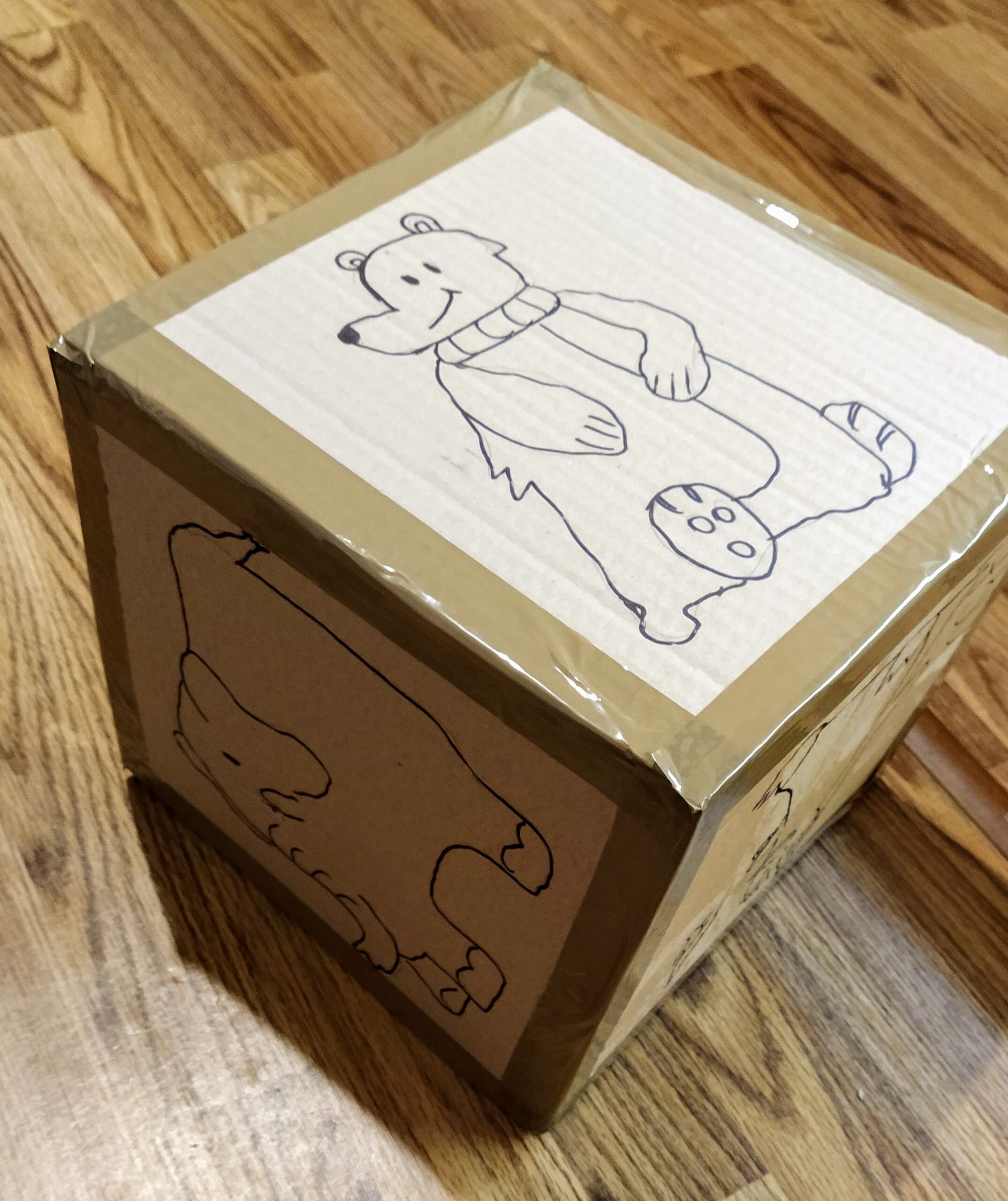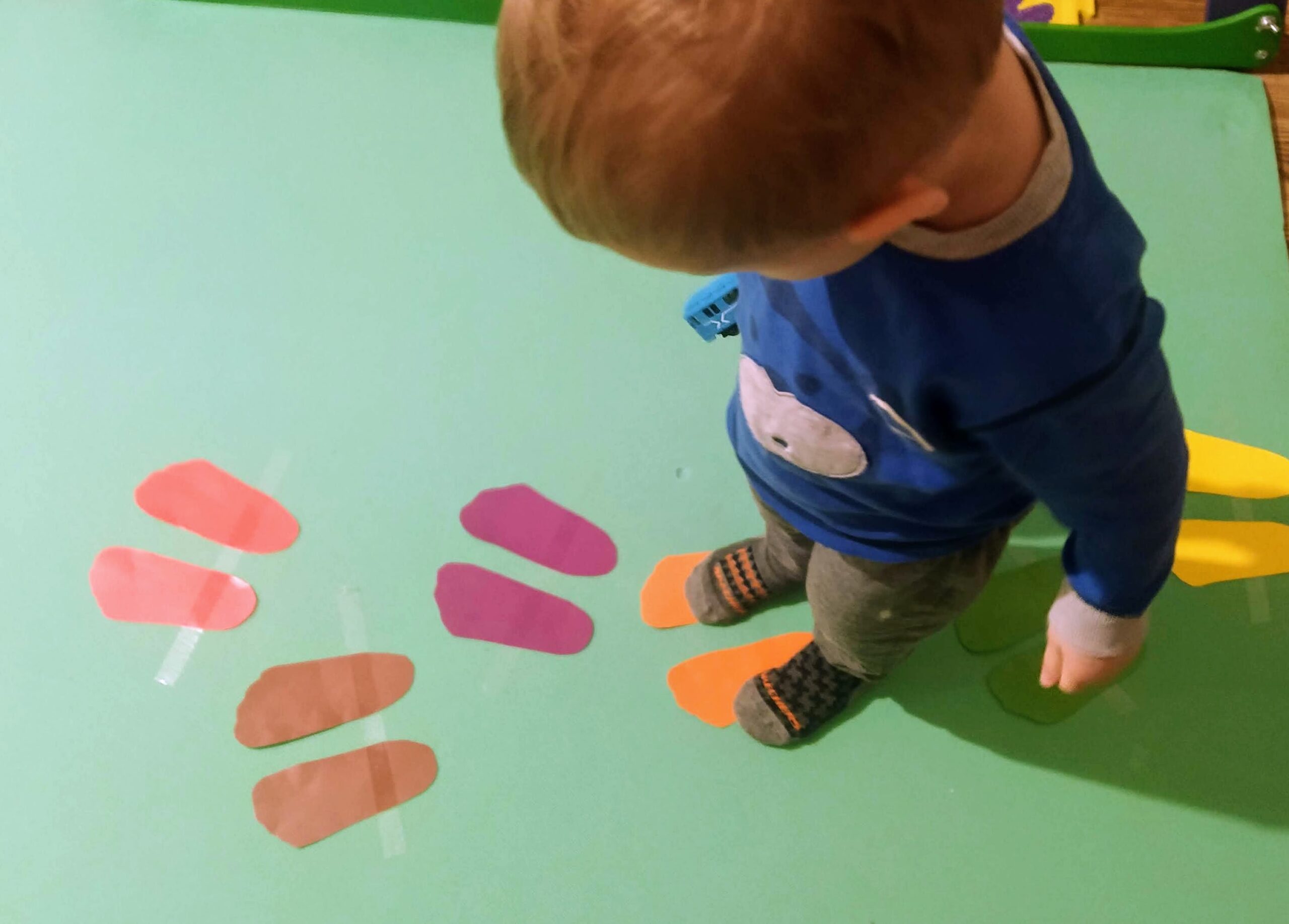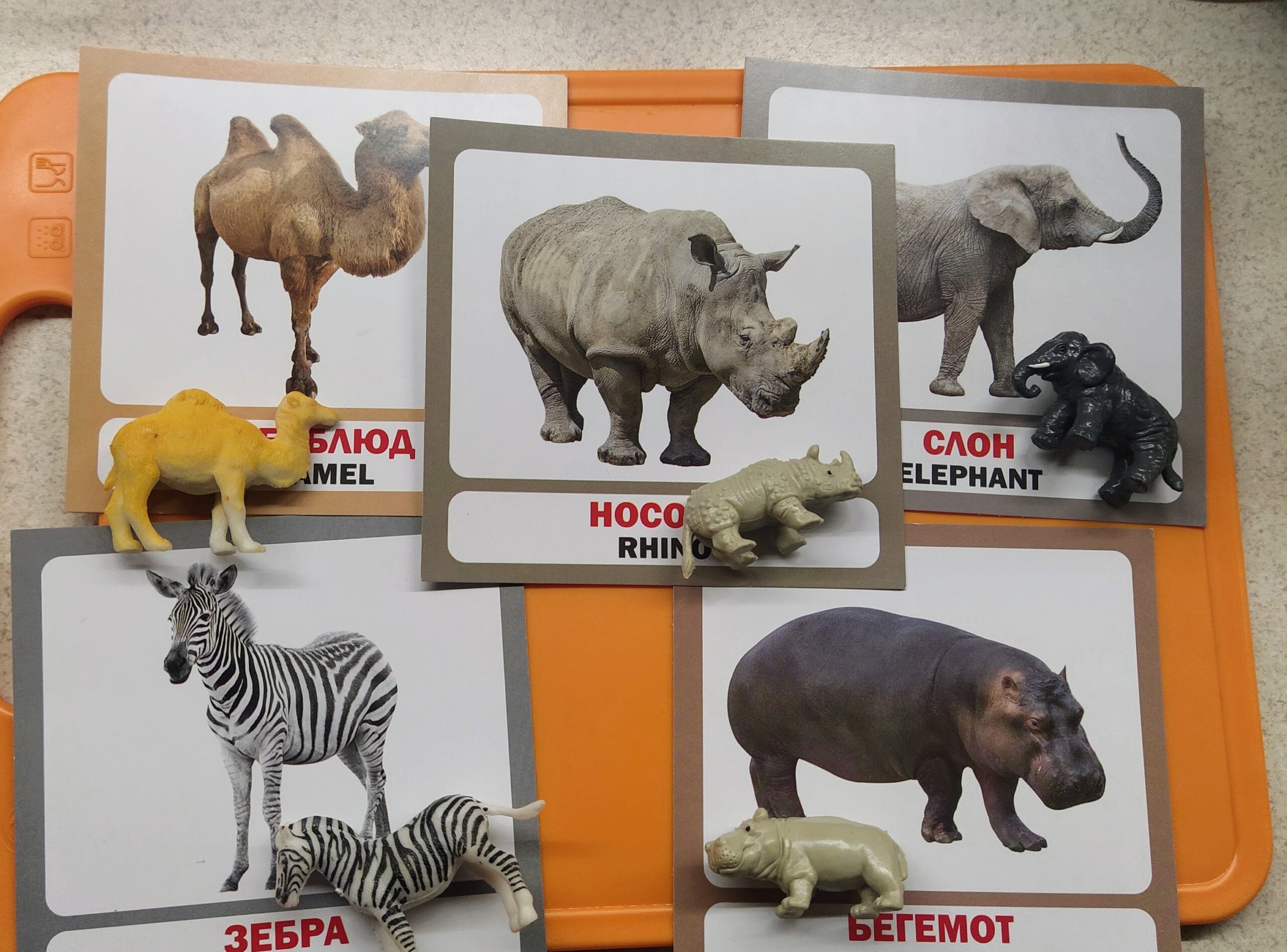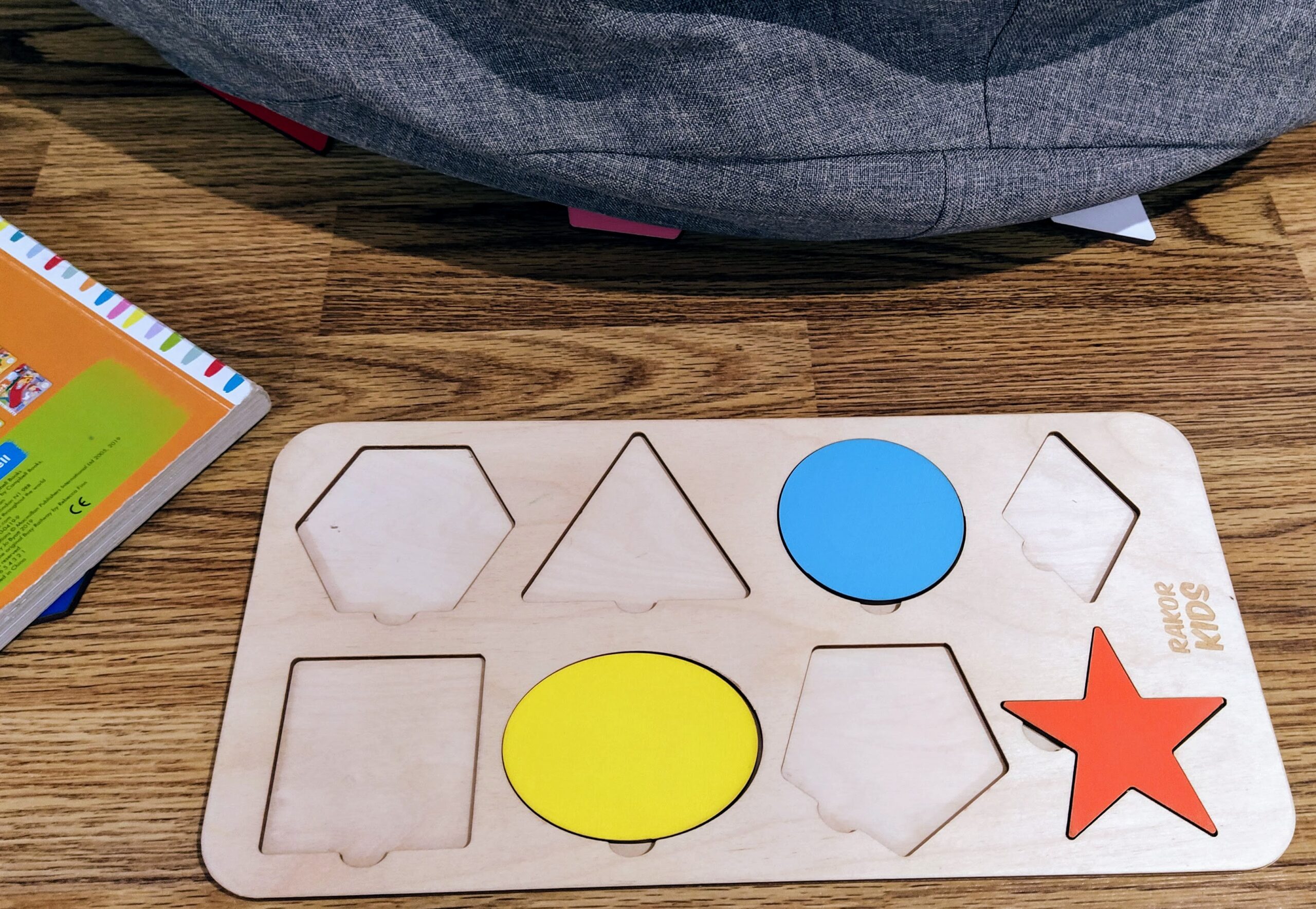Very young learners are full of energy and can’t focus on one activity for more than 5-7 minutes. For that reason, conduct a lesson dynamically, change activities quickly, and add plenty of movement tasks. The activities in the article can be used both with toddlers and preschoolers but even primary school children won’t get bored with them. Use these games if you are teaching one-on-one as well as mini-groups.
Shape jumping
This game practices shape recognition. Draw basic shapes with chalk or make them using strips of tape. The most popular shapes are a circle, a triangular, a square, a rectangle, a heart, a star, an oval, a diamond.
Variant 1
Ask children to stand inside a circle and play ‘A shape song’. They need to jump in the circle and repeat: ‘A circle, circle, can you find a circle?’. After the question: ‘Can you find a circle?’, preschoolers run around the classroom and try to find something in the shape of a circle. Continue with other shapes.
Variant 2
A teacher calls out a shape and learners run or jump into it. As an alternative, they can put a small object, for example, a ball, a building block, or a toy inside.
Here is an example of how we play shape jumping at home with a toddler.
 Animals action die
Animals action die
This game is based on the song ‘Let’s go to the zoo’. Make a giant die of a cardboard box. Draw an animal on every side or print the animal pictures out and stick them to the die. The first player rolls the die. He should move like the animal they see on the side.
Catie from supersimplesongs.com will show how animals move their feet and arms. The list of animals and their actions:
Slither like a snake
Jump like a kangaroo
Stomp like an elephant
Swim like a polar bear
Swing like a monkey
Waddle like a penguin

Bear paw walk
This game is great for practicing ABC letters. Prepare cards with target letters and cut our six fish from colored paper. Put them in the circle.
Each pupil stands in a letter they like. The music starts and the kids begin to move (run, jump or crawl) clockwise around the circle. From time to time the teacher stops the music and pupils freeze. Each player needs to identify the letter underneath them. If they stand on a fish, they should pick it up. The game continues until a player catches two fish.

Footprint hop
It’s great for gross motor skills and for practicing colors. Cut out footprints of target colors from cardboard.
Variant 1
A child should shout out colors as they hop on the footprints.
Variant 2
Ask a learner to jump onto footprints but not to step on a certain color. They have to hop over some footprints.
In the picture, the arrangement is really easy since my son is 2,4 years old. For older children, the distance between the footprints will be bigger.
 Scavenger hunt
Scavenger hunt
It’s an easy but exciting game for toddlers, preschoolers, and older children. Children can ‘hunt’ for practically everything: colors, numbers, alphabet letters, opposites, shapes, directions, nature objects.
Prepare all materials in advance: cards, pictures, objects. Hide them in places where pupils can search. Assign partners and give graphic organizers for the activity. Set a time limit. Sum up the results.
Here are some examples of this activity.
Animals scavenger hunt: participants have 3-5 cards and they search for animals in the pictures.

Colors scavenger hunt: children need to find any object of a required color.

Shapes scavenger hunt: pupils have to find the parts from the puzzle.

An example of a Noun scavenger hunt for primary school.






 Вероника Аветисян
Вероника Аветисян 
 Маргарита Аветисян
Маргарита Аветисян 


